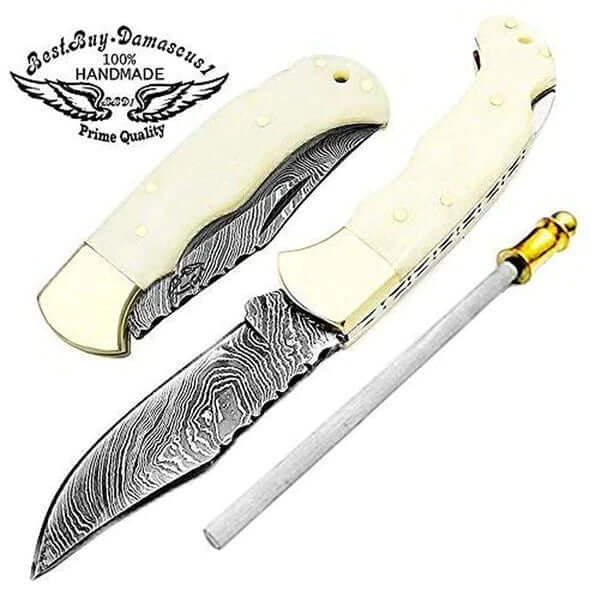
Top Tips for Buying Your First Hunting Knife
Posted by Best.Buy. Damascus1 on
A good hunting knife can do all the typical hunter needs, including skinning the animal and cutting through its ribs and bone. It's crucial to think about your purpose for using the knife as well as the kind of game you want to hunt when selecting a hunter’s knife.
Obviously, a hunter for big game will use a different kind of knife than a hunter for small game, like rabbits. And you would be mistaken if you assumed that bigger was always better. An excessively large knife can make cleaning small game harder rather than easier and increase your risk of cutting your fingers.
Hunting knives must perform the intended task while also feeling comfortable in your hand. Thus, choosing one is a personal choice. The following are some crucial factors to take into account when looking at hunting knives:
Folding or Fixed-Blade Hunting Knives
Your first significant decision is whether to choose a folding or a fixed-blade hunting knife. The blade of a fixed-blade knife is fixed and always in the open position. The fixed blade knife is regarded as strong and reliable because it has no moving parts. But you must wear the knife and carry it in a sheath since it is always open. Due to this, it is heavier than a folding knife with a similar blade size.
A folding knife's blades fold into the handle. Additionally, the blade can't accidentally close while you're using it thanks to its locking function. The knife is smaller and more convenient to carry since the blade pulls back into the handle.
Fixed blades and folding blades are both popular choices.A fixed blade design is the ideal choice for the dedicated hunter who wants a hunting knife. The flexible blade handle could be a better option for someone who occasionally hunts, uses the knife for other tasks, and likes to carry it in their pocket.
Choosing the Shape of the Blade
Although there are various blade shape alternatives, you'll have to pick the one that suits your needs.
The drop-point blade has a convex back. These knives are excellent for cleaning and skinning specifically. In fact, the dropped point's main goal is to decrease the chances of penetrating the hide while working.
A clip-point knife has a straighter form than a drop-point. However, a concave back that finishes in a point appears halfway up the blade. Most hunting and camping tasks can be completed with a clip-point blade.
The skinner blade has a unique shape. Like a little scimitar, the blade slightly bends upward from the handle. The design makes it possible to quickly skin large game animals and other hunting tasks. Look for a blade with a short, thin design without serrations if you want one that works particularly well for skinning.
Selecting the Right Handle
A hunting knife should be sharp, and you don't want to risk an accident if it slips. The last thing you should be doing is struggling to grip your knife. Consequently, the handle's texture is equally as significant as its shape.
Hunting knives can be made of anything from man-made materials like steel and fiberglass composites to natural materials like bone or wood. The texture is crucial to ensure high functionality. The handle ought to have an easy-to-grip, non-slip feel. Look for textures that are rougher since they will maintain their grip while you are working.
A hunting knife is an essential part of your overall outdoor equipment. Pick a knife that fits your requirements and eases your outdoor activities.

